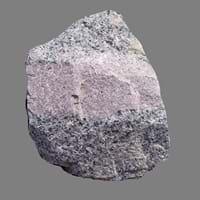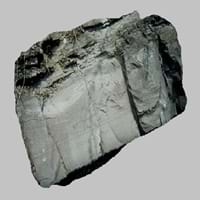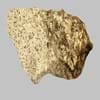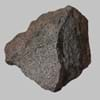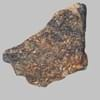Definition
Aplite is a fine-grained granite composed mainly of feldspar and quartz
A sedimentary rock, deposit of a submarine turbidity currents and are composed of layered particles
Origin
Iran
European Foreland Basins
Discoverer
Unknown
Arnold H. Bouma
Etymology
From German Aplit, from Greek haploos simple + -ite
From Medieval Latin turbiditas, from Latin turbidus (turbid). Turbidity current is from 1939
Class
Igneous Rocks
Sedimentary Rocks
Sub-Class
Durable Rock, Hard Rock
Durable Rock, Soft Rock
Group
Plutonic
Not Applicable
Other Categories
Fine Grained Rock, Opaque Rock
Coarse Grained Rock, Fine Grained Rock, Opaque Rock
Texture
Granular, Graphic
Mud-rich, Sandy
Color
Black, Grey, Orange, Pink, White
Black, Brown, Colourless, Green, Grey, Pink
Durability
Durable
Durable
Scratch Resistant
Yes
Yes
Appearance
Veined or Pebbled
Dull and Banded
Interior Uses
Bathrooms, Countertops, Decorative Aggregates, Entryways, Floor Tiles, Homes, Hotels, Kitchens, Stair Treads
Bathrooms, Countertops, Decorative Aggregates, Flooring, Homes, Interior Decoration
Exterior Uses
As Building Stone, As Facing Stone, Bridges, Paving Stone, Near Swimming Pools, Office Buildings, Resorts
As Building Stone, As Facing Stone, Paving Stone, Garden Decoration
Other Architectural Uses
Curbing
Curbing
Construction Industry
As Dimension Stone
As Dimension Stone, Cement Manufacture, Construction Aggregate, for Road Aggregate, Making natural cement
Medical Industry
Not Yet Used
Not Yet Used
Antiquity Uses
Artifacts, Monuments, Sculpture, Small Figurines
Artifacts, Monuments, Sculpture
Commercial Uses
Curling, Gemstone, Laboratory bench tops, Small Sculptures, Tombstones
Cemetery Markers, Creating Artwork
Types
Not Available
Not Available
Features
Available in lots of colors, Available in Lots of Colors and Patterns, Is one of the oldest rock
High silica content, Host Rock for Lead
Archaeological Significance
Famous Monuments
Data Not Available
Data Not Available
Famous Sculptures
Data Not Available
Data Not Available
Pictographs
Not Used
Used
Petroglyphs
Not Used
Used
Formation
Aplites belong to intrusive igneous rocks which are mostly quart and alkali feldspar and are formed from residual eutectic granitic liquids and represent the final crystallization products of magma.
Turbidite is a type of sedimentary rock formed when a river carries or transports pieces of broken rock as it flows. These particles then settle down and are subjected to high temperature and pressures hence forming Turbidite.
Mineral Content
Amphibole, Biotite, Feldspar, Hornblade, Micas, Muscovite or Illite, Plagioclase, Pyroxene, Quartz
Coesite, Quartz, Sand
Compound Content
Aluminium Oxide, CaO, Iron(III) Oxide, FeO, Potassium Oxide, MgO, MnO, Sodium Oxide, Phosphorus Pentoxide, Silicon Dioxide, Titanium Dioxide
CaO, Carbon Dioxide, MgO
Types of Metamorphism
Burial Metamorphism, Cataclastic Metamorphism, Hydrothermal Metamorphism, Regional Metamorphism
Not Applicable
Types of Weathering
Chemical Weathering, Mechanical Weathering
Biological Weathering, Chemical Weathering, Mechanical Weathering
Types of Erosion
Chemical Erosion, Coastal Erosion, Wind Erosion
Chemical Erosion, Coastal Erosion, Sea Erosion, Water Erosion, Wind Erosion
Grain Size
Very fine-grained
Fine to Coarse Grained
Fracture
Not Available
Splintery
Streak
White
White, Greenish White or Grey
Porosity
Less Porous
Very Less Porous
Luster
Dull to Pearly to Subvitreous
Metallic
Cleavage
Not Available
Disjunctive
Toughness
Not Available
2.4
Specific Gravity
2.6
2.46-2.73
Transparency
Opaque
Opaque
Density
2.6 g/cm3
1.6-2.5 g/cm3
Resistance
Heat Resistant, Wear Resistant
Heat Resistant
Deposits in Eastern Continents
Asia
China, India, Iran, Saudi Arabia, Sri Lanka, Taiwan, Thailand, Turkey, Vietnam
Not Yet Found
Africa
Angola, Egypt, Madagascar, Namibia, Nigeria, South Africa
Western Africa
Europe
Austria, Belgium, Finland, France, Germany, Italy, Norway, Sardinia, Spain, Switzerland, The Czech Republic, Venezuela
Austria, Belarus, Romania, Switzerland, United Kingdom
Others
Not Yet Found
Not Yet Found
Deposits in Western Continents
North America
Canada, USA
Canada, USA
South America
Not Yet Found
Brazil, Colombia
Deposits in Oceania Continent
Australia
Not Yet Found
New Zealand, Western Australia
All about Aplite and Turbidite Properties
Know all about Aplite and Turbidite properties here. All properties of rocks are important as they define the type of rock and its application. Aplite belongs to Igneous Rocks while Turbidite belongs to Sedimentary Rocks.Texture of Aplite is Granular, Graphic whereas that of Turbidite is Mud-rich, Sandy. Aplite appears Veined or Pebbled and Turbidite appears Dull and Banded. The luster of Aplite is dull to pearly to subvitreous while that of Turbidite is metallic. Aplite is available in black, grey, orange, pink, white colors whereas Turbidite is available in black, brown, colourless, green, grey, pink colors. The commercial uses of Aplite are curling, gemstone, laboratory bench tops, small sculptures, tombstones and that of Turbidite are cemetery markers, creating artwork.
